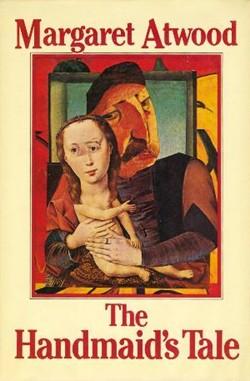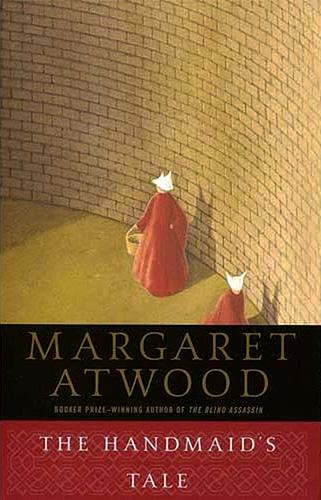Margaret Atwood‘s “The Handmaid’s Tale” stands as a seminal work in the realm of dystopian literature, offering a chilling exploration of a society steeped in patriarchal dominance and subjugation. Since its publication in 1985, the novel has resonated with readers and critics alike, not merely as a work of fiction but as a poignant reflection of feminist dystopia. Atwood’s narrative constructs a world where women’s rights are systematically stripped away, serving as both a cautionary tale and a mirror to contemporary societal issues. This article delves into the ways in which “The Handmaid’s Tale” encapsulates the themes of feminist dystopia, examining the novel’s portrayal of power dynamics, resistance, and identity. Through an analytical lens, we explore how Atwood’s depiction of a totalitarian regime underscores the persistent struggles for gender equality and autonomy, prompting readers to reflect on the intersection of fiction and reality.
Examining the Historical Context and Feminist Roots of The Handmaids Tale
Margaret Atwood’s The Handmaid’s Tale is deeply entrenched in a historical and feminist framework that is both reflective and cautionary. The novel, published in 1985, draws on the political and social climate of its time, echoing the anxieties of second-wave feminism. This period was marked by significant discourse on women’s rights, autonomy, and reproductive freedom, as well as growing concerns about the potential rollback of these hard-won gains. Atwood’s narrative captures the essence of these fears by creating a dystopian society where women are subjugated and stripped of their rights, serving as a chilling reminder of the fragile nature of progress.
- Historical Influence: The 1980s saw a resurgence of conservative politics, with many feminist scholars warning against the backlash against women’s liberation movements.
- Feminist Roots: Atwood’s work aligns with feminist literature that critiques patriarchal structures and explores themes of female oppression and resistance.
- Contemporary Relevance: The themes resonate today, reflecting ongoing debates around bodily autonomy and gender equality.

Analyzing the Symbolism and Themes of Oppression in Atwoods Dystopian World
Margaret Atwood’s The Handmaid’s Tale intricately weaves symbolism and themes of oppression, painting a grim picture of a society that subjugates women under the guise of religious piety. Atwood uses various symbols to underscore the oppressive nature of the Gileadean regime. The red garments worn by the Handmaids are not only a marker of their role and lack of identity but also symbolize fertility, blood, and enforced servitude. The Eyes, an omnipresent surveillance force, represent the loss of privacy and autonomy, ensuring that women remain under constant watch and control. Scripture is another potent symbol, manipulated to justify the subjugation and control of women, highlighting how religious texts can be distorted to serve patriarchal ends.
These symbols are interwoven with broader themes of oppression that resonate deeply within the narrative. The theme of loss of identity is prevalent, as women are stripped of their names and past lives, reduced to mere functions within the society. Sexual oppression is institutionalized, with women reduced to their reproductive capabilities, highlighting the extreme objectification and commodification of female bodies. Atwood also explores the theme of power and control, depicting a society where power dynamics are skewed heavily in favor of men, and any semblance of resistance is brutally crushed. This examination of oppression not only reflects feminist concerns but also serves as a cautionary tale about the potential for systemic abuses of power.

Understanding the Impact of Atwoods Narrative on Modern Feminist Discourse
Margaret Atwood’s narrative in The Handmaid’s Tale has become a cornerstone in the realm of modern feminist discourse, largely due to its chilling depiction of a society where women’s rights are utterly suppressed. Atwood constructs a dystopian world, Gilead, where women’s roles are strictly confined to reproductive duties, reflecting an exaggerated yet poignant critique of patriarchal control. This narrative starkly highlights the fragility of women’s autonomy and serves as a stark warning of the potential regression of women’s rights, making it a crucial text in discussions surrounding gender equality and feminist thought.
The impact of Atwood’s work is evident in several aspects of modern feminist discourse:
- Empowerment through Awareness: Atwood’s narrative emphasizes the importance of vigilance and activism, encouraging readers to recognize and resist societal structures that threaten women’s freedoms.
- Intersectionality: By showcasing the varied experiences of women in Gilead, the novel underscores the necessity of understanding the diverse dimensions of oppression, which is a significant element in contemporary feminist conversations.
- Resilience and Solidarity: The characters’ struggles and small acts of rebellion inspire modern movements, advocating for unity and collective resistance against systemic injustices.
Through its powerful storytelling, The Handmaid’s Tale continues to influence feminist narratives, urging both reflection and action in the ongoing pursuit of gender equality.

Exploring the Adaptations and Continued Relevance of The Handmaids Tale
The adaptability of The Handmaid’s Tale in various forms of media highlights its enduring relevance and profound impact on cultural discourse. Margaret Atwood’s dystopian vision has been reimagined in television, theater, and even graphic novels, each adaptation bringing a new dimension to the narrative. These transformations allow the story to resonate with contemporary audiences, addressing evolving themes of gender politics, autonomy, and societal control. The Hulu series, for instance, expands on the original text, delving deeper into the psychological and emotional landscapes of its characters, thereby offering viewers a more immersive experience.
Several factors contribute to the continued significance of Atwood’s work in the modern era:
- Timeless Themes: The exploration of power dynamics and systemic oppression remains pertinent in today’s socio-political climate.
- Expansive Interpretations: Each adaptation offers fresh perspectives, enabling new conversations around feminist ideologies and human rights.
- Symbolic Resonance: The iconography of the red cloak and white bonnet has transcended fiction, becoming a symbol of protest and resistance worldwide.
